This of course being the right message. If you can read it when I Send it you. And, for your viewing pleasure:

[Anonymous but blurry and far from privacy-complete, this physical cloud exchange…; NY Grand Central]
This of course being the right message. If you can read it when I Send it you. And, for your viewing pleasure:

[Anonymous but blurry and far from privacy-complete, this physical cloud exchange…; NY Grand Central]
Now that you have finally got something going qua GDPR compliance – way short of what you’d want but still, at least something, better than the Nothing to which you were limited so far – there is a new twist to the requirements…
To be clear; by now you should at least have the requirements clear, and also possibly have some upsides lined up (if not, go shop with some vendor consultancy (and others); they’ll tell you about the benefits of data minimisation, the unstress of having your house on order, etc.). And have something going qua reconnaissance, though not armed recce or recattack.
But now, you may have to rethink. A bit. About what you’d have to have prepared when you land in M&A territory, or even in Chapter 7/11/13- (and 9-!) or any glocal receivership. Because … well, the idea sprang from this thing with de-anonymising data from sperm banks (in NL); until now most highly classified secrets (qua donorship). Turns out that not all clinics have the old data, still, because previously the secret was to be eternal hence best secured by throwing away the data.
But more seriously, not all clinincs exist anymore and there is no way to know where the data went, if anywhere.
And that’s where you organisation comes in. Not qua LoB but qua existence, now and in the future. Will you buy, take over, integrate some other org, or be on the receiving (uh…) end of the turmoil? You may want to make sure that the “GDPR” record of the other party is impeccable… Or end up with a mixed compliance bag which is equal to no compliance…
Possibly, you may have to prepare for some form of end-of-organisational-life where there is no body to take over your data and you might have to prepare for that ..?
Well, we’ll see what WG29 comes up with. At least, it will be additional stuff.
Plus:
 [In a weird twist of interpretation, this complex of buildings could have housed a private bank of said kind…; Sevilla BTW]
[In a weird twist of interpretation, this complex of buildings could have housed a private bank of said kind…; Sevilla BTW]
Always pleasant, to read one’s (almost…) correct, on off-off-Broadway analysis and postpredictions. Like this one, corroberated here, in a way.
Yes, I kno. I almost got that correct. Enough to confirm the line of reasoning, if you read it / both correctly, they turn out correct. I’ll stop now. And:
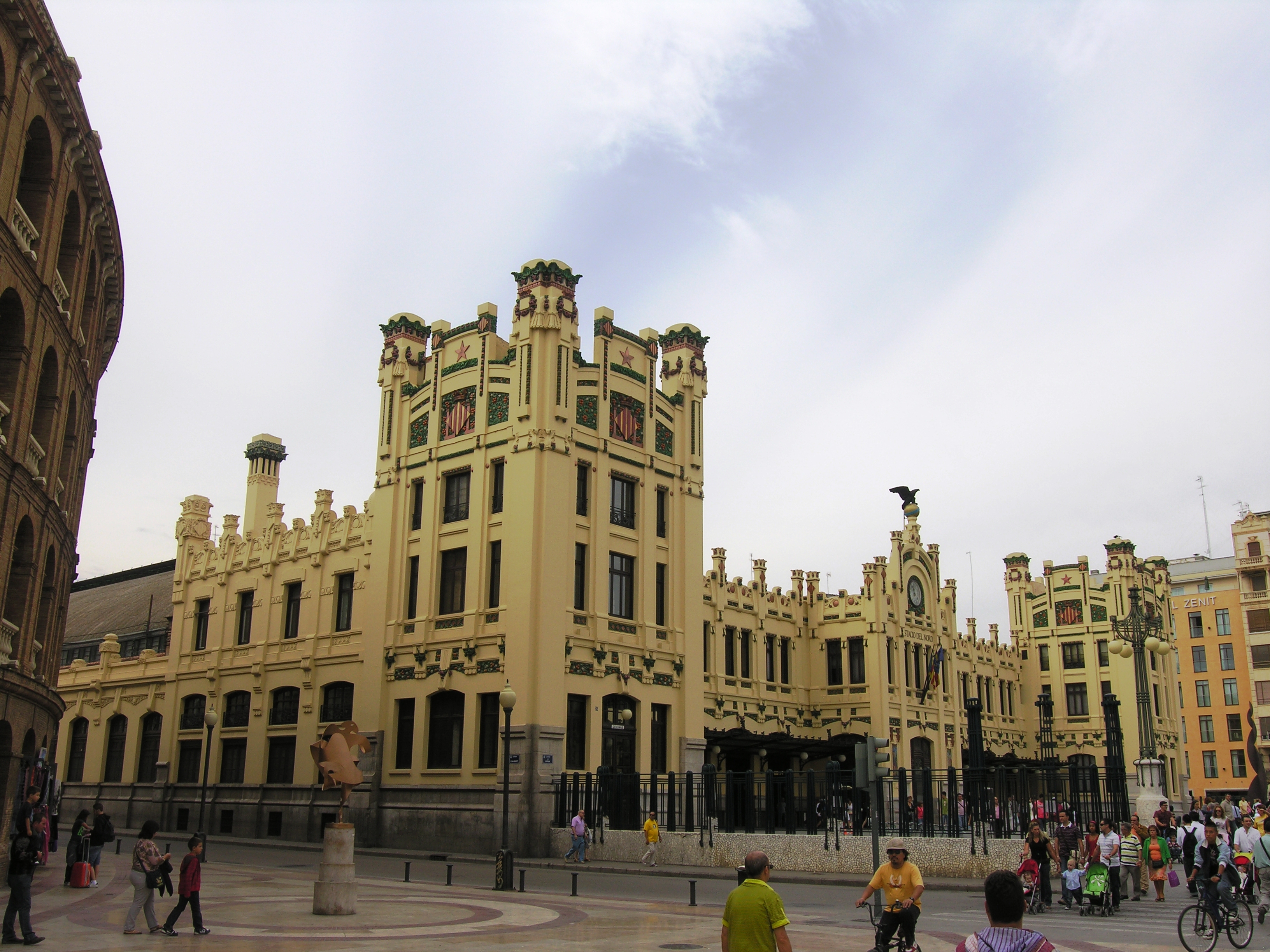
[Check, for Dutch ad viewers; Valencia]
There may be more reasons that quantum crypto will not protect you against those evil villains out there, as suggested here (in Dutch) but quod non!!! (as I said; in Dutch ;-| ), for the not ten but one single reason:
When ‘hackers’ will not be able to access your comms when you will be using quantum crypto, so governments will also not so forget about it you will be jailed for life for using quantum crypto in the first place and also you are the most suspect of all and if still you’d try to use it, you will be whacked off-line … and your house raided, etc.etc. Because this.
And because, however clever you might think you are, obviously in vein, there will always be the ‘endpoint-to-you gap’ where parties may intervene.
Or they put a gun to your head. Good luck refusing.
And governments will restrict to their own comms; the most powerful one grabbing the scene and leaving all of the rest in the dust. And IF you believe their beneficial ethics, well you just removed yourself from serious discussion.
Anyway:
 [Drone with too much tilt shift, or ’70s display scanned from an (actual, physical) slide..? (mine; ed.); <undisclosed location>]
[Drone with too much tilt shift, or ’70s display scanned from an (actual, physical) slide..? (mine; ed.); <undisclosed location>]
Once upon a time in a land far, far off-shore to today’s centers of economic, political of civilised-society gravity, before DevOps was a thing even, there was a great algorithm champion warrior named Knuth. Unlike his fellow programmer clansman, that coded for fun and profit deep innovation and peer recognition [f&p came only decades i.e. ‘centuries’ later; ed.], in a world that was barren of bad code but still inhospitable to what later would become hero geeks and nerds (for whom this was still obvious), Knuth was just that little bit less quickly-footed in his subject matter, earning him the nickname The Agile, just to deride his profound work.
Because, you see, he was a man of honour and clean algorithms, two things that in his days were nearly the same. And he was in favour of solving things with fundamental parts. Not ‘process steps’ or so – how would he laugh at those that propose that, these days. Nor happenstantially bundled ‘sprints’ of fast (hacked, in its profound meaning) coding – though extreme coders live on here and there, not given the honour and credit they deserve.
But real, standardised, tried and tested (even in a semi- or fully mathematical way) logically consistent actual process steps. But then, he understands that the real warrior body (brains) belong only to those that have honed the warrior spirit, have grinded and polished their skills over decades to shine like blank sheet metal of the finest alloys. So, not like ‘hey I had this one-year (??, mostly one-week or so ..!) course in agile programming now I’m a l33t h@x0r’ kind of pre-puerile nonsense.
Well, dear readers, you know how times can fly and how reputations can change overnight. So it happens that his nickname suddenly meant something else. No more poetic escapes of sparse code and clean, logic-based algorithm library linking and calling/returning at the side of the waterfall. development method. No more re-use of the tried and tested. No more frozen waterfalls at all, due to scope creep leading to progress-temperature drops to zero and below, leading to icy atmospheres where nothing works anymore. No more basic weapons training of even knowing how to deploy re-usable code and algorithms…
All we have now, in these days with no more heroes (but the baddies are still out there, everywhere), is/was faint attempts at “patterns”, being of course the latter-day devolution of the very algorithms that made Knuth the hero he was. Is.
And then, DevOps came to the scene. If only Knuth were still in his prime, he would know what to do…
Plus:
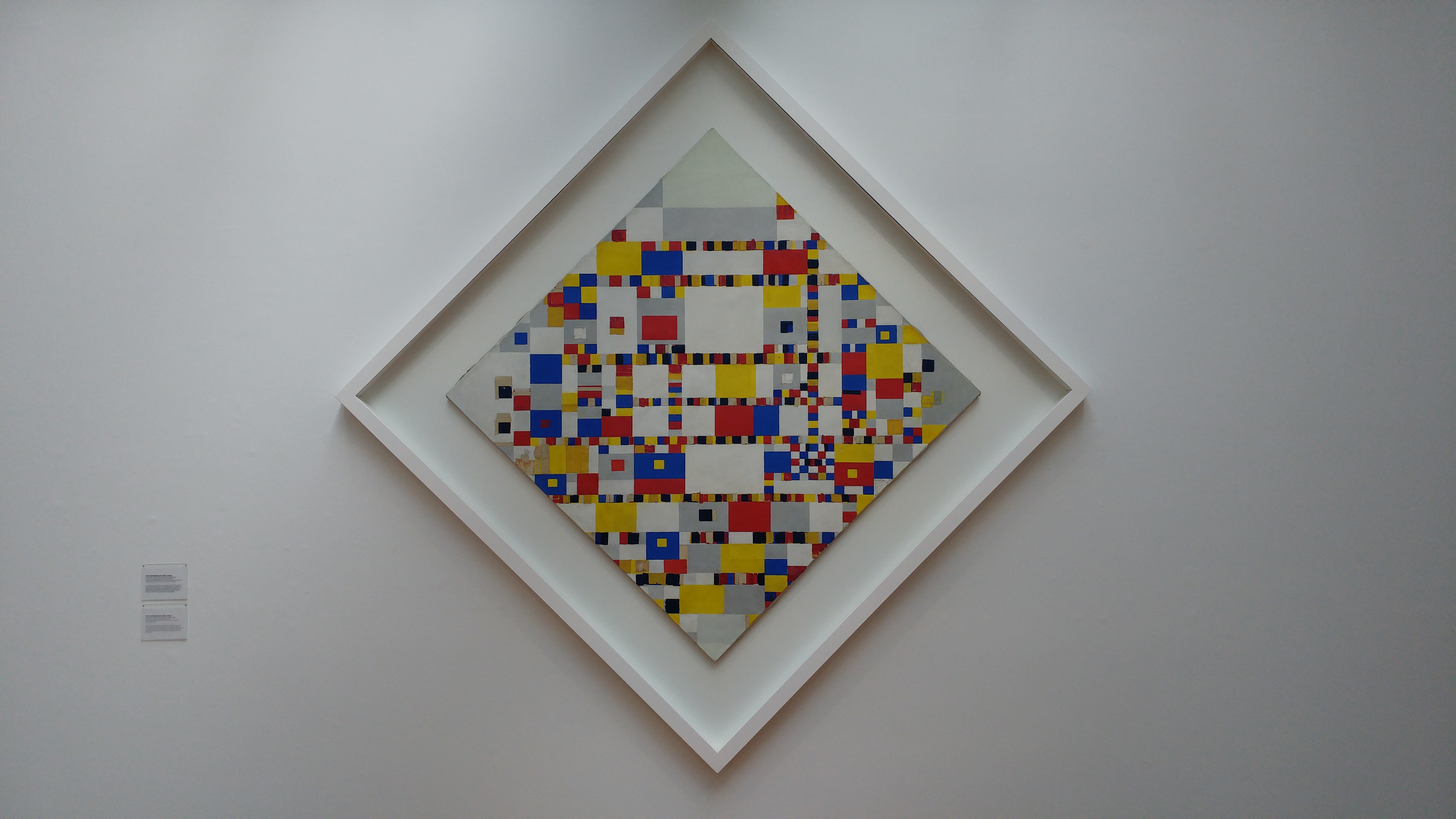
[Only in such art is extremely precisely applied sloppiness a virtue …! Gemeentemuseum Den Haag]
Recently, I heard the gross error of thinking again “When people use their business IT for private purposes, they have no right to privacy” – rightly countered from the room that standing European law most clearly has the opposite: Employer has zero rights to see anything unless there’s prior evidence of some malfeasance or malfunctioning (e.g., performance problems – of the employee, not of the infra…). So, blanket or categorical surveillance (or blocking, which presupposes monitoring how the heck else would you detect the to-be-blocked URLs..!?): No sir.
What about the recent spat where a bank blocked Netflix because employees’ use of it at home, using company laptops that Citrixed back to the bank and from there onward, overloaded networks of sad (typo not said, intended to characterise the) bank? Well, a. how dumb can you be to Netflix over Citrix etc, or is one so incredibly cheap (hey, works at bank; apart from the exceptions you know, go figure) that bandwidth cost is an issue? Then maybe you’re too scroogy to be allowed to wok at a bank in the first place; monumental failure of ethics wise, b. in this case, clearly there are performance issues – when it’s noticable on the company network level, certainly it goes for a number of individuals, even if only by disturbing the performance (bandwidth availability) of others. c. there’s no absolutes in what employers cannot do.
But clearly, in just about every case considered today where categorical blocking by blacklisting would be attempted because managers sideways involved in HR stuff would understand what the URL is about, i.e., not-business-related entertainment however SFW or N-, skipping the blacklisting of the really to be blacklisted sites (torrents, malware shops and other rogue tooling),
we have again the panopticon argument of “observation changes behaviour” – and in these times of clueless managers (the less they know that of themselves, the worse cases they are!), you need in particular those ‘users’/employees that go beyond monkey typing away to be creative in their work and find new revenu / cost reduction directions. Which means that when you observe, or only log to be able to observe, you squelch productivity and profitability… Way to go!
[Not the one mentioned above; HypoVereins München on a heat-hazy day]
Just when you thought the solutions to your eternal (not) pwd problems were getting mature enough to deploy – nudged to annoyance by all the vendor FUD – and you forgot the solution is totally easy and already in your infra everywhere, you will find … 2FA is declared illegal …
Oh …, it turns out to concern the party drug kind only, not 2FA but 4-FA. Like, here. Phew!
But stil, kids, don’t rely on 2FA either; help users reduce complexity not hinder ’em!
Oh, and:
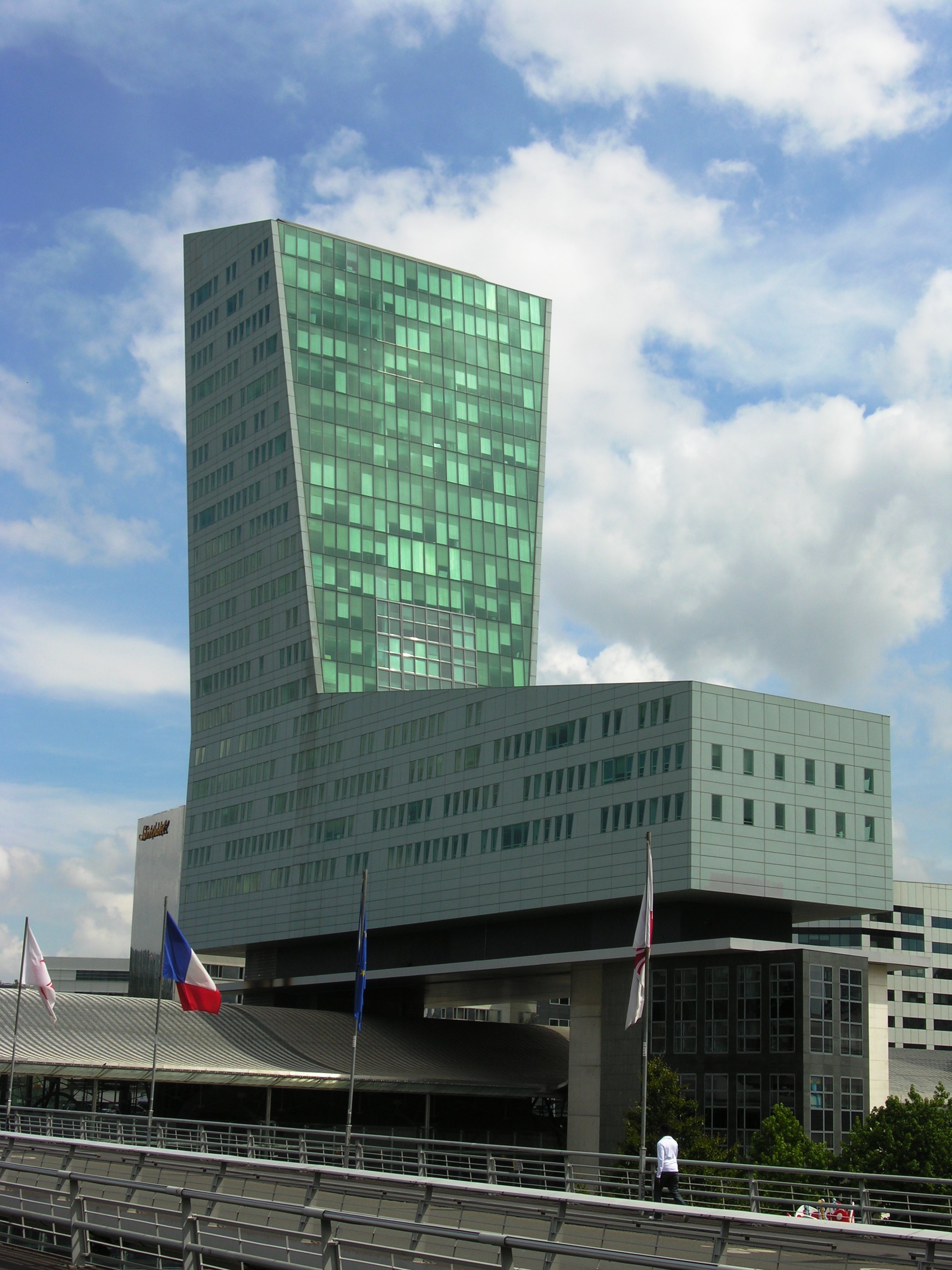
[When all sober and straight would have been Boring; Lille]
Some issues, aspects of interest, collided a couple of weeks ago.
Macron’s team with their skillful double-cross deceit in the ‘leakage’ of election-sensitive info (!read the linked and weep over your capabilities re that, or click here for (partial?) solutions or others or devise your own). One down, many to go; Win a battle, not win a war yet.
In unrelated (not) news, what are the tactics used IRL to actively engage in pre-battle tactics? Can we plant our own systems with scar (?) tissue i.e. fake immunised (for us!) / unused information that is weaponised with trail collecting (or only source-revealing) capabilities, like shops and private persons can get “DNA” spray paint thus called because it’s uniquely coded so is identifiable and traceable? Can we harbour ‘hidden sleeper (?) cells’, pathogens i.e. malware, that doesn’t affect us but when ‘leaked’ to an adversary’s environment / stolen, oh boy does it become virulently active and destruct? (Silent) tripwires, boobytraps where are you?
How far behind the curve are the general public (us, I) with intel on developments in these areas? If the French used some of this stuff (using is revealing, qua tactics, unfortunately) certainly others would have considered the methodologies involved. Raises questions indeed, as were around, about whether or not the cyrillic traces were planted into WannaCry1.0 or left there in error. [There’s no such thing as perfect Opsec but this would severely hurt some involved at the source / would’ve cared better, probably.]
Just so we can get a better view on the balance being shaken up so vehemently, between asymmetric simpleton hacks [the majority you know (like, you actually can learn about; the real majority you may not hear about) of big organisations with their huge attack surfaces and attackers only needing one pinhole] and more-or-less regaining-symmetric nation-state attacks against each other (all against all) where the arms’ race of tooling now is so out of balance.
Would like to know, for research purposes only of course, really.
We’ll see. And:
 [Yes that’s real gold dust on the façade hiding in plain sight, but you wouldn’t be able to scrape it off. Would you? Toronto]
[Yes that’s real gold dust on the façade hiding in plain sight, but you wouldn’t be able to scrape it off. Would you? Toronto]
How far behind is the Dutch (startup) scene with AI ..?
That may seem kurt, but …
Really there is no sign of Dutch AI industry or even industriousness.
Unbefitting the Dutch, is it not? ‘We’ should have all the brains needed, the industriousness, the venturing spirit, the openness to things-new.
But apparently, ‘we’re still stuck in collectivist ideals, where rocking the boat is only allowed when for some naïve progress [Uhm this is no sligh to Boyan Slat; on the contrary I and everyone likes his ideas and heart and soul he puts into it]. When searching for ‘Dutch AI scene, hardly anything turns up. This among the hardly search results; ominously.
So, it’s a Shame. And Why ..!?
Yes I did list some why’s but they don’t cut it, against the Aye’s. We need a new élan! How to get such a thing going!?
And:
 [If that is the neo-modernistest that you build / apparently want to spend your money on, then well you may be doomed indeed; Zuid-As Ams]
[If that is the neo-modernistest that you build / apparently want to spend your money on, then well you may be doomed indeed; Zuid-As Ams]
Not even referring to the Masterpiece. On the contrary, we have here: … Well, what?
Interested as we all are in the subject, since it is defined still so sloppily, we all look for progress, I started. But stopped, when it turned out … risk appetite is defined in hindsight, with a survived disaster being the appetite threshold. Nice. So you’ll know what your appetite is when it hit you and were lucky enough to survive. If you didn’t survive, you now know you passed the threshold. Same [?] with projects: Only if it fails, do you have to write off the investment. The idea of sunk costs may be an enlightenment..?
Etc.
I believe the CRISC curriculum has other, actually somewhat useful, information on this, and on risk tolerance ..?
Your comments, please.
Plus:
 [For 20 points, evaluate the risks, e.g., qua privacy, bird strikes, value development; Barça]
[For 20 points, evaluate the risks, e.g., qua privacy, bird strikes, value development; Barça]

Voor sigaren bepalen we het profiel aan de hand van de criteria Smaak, Balans, Body, Sterkte, Aroma en Finish.
Voor Smaak pakken we het aromawiel erbij. Let wel I; wat u proeft of verwacht, kan gedurende de diverse fasen van het roken nog variëren... En let wel II; er zijn ook aspecten die nog niet zozeer als aroma staan aangegeven in het wiel, we denken aan termen als (ja de sigarenwereld is langzamerhand, helaashelaas US-, Engels geworden) zesty, tangy, floral, en earthy, of soms zelfs metallic. Lijkende termen die een combi zouden kunnen zijn van diverse aromas en papillaire en olfactorische/nasale sensaties en -tactiele invloeden. Hierbij komen termen als 'complex' uiteraard ook bijgepakt, om in dit geval te beschrijven dat er vele aromas herkenbaar zijn. Rustig roken, dat is niet alleen beschaafder en allerlei sigarenrokeneffecten-versterkend maar biedt ook meer kans om aromas te onderscheiden.
Balans is voor de hand liggend; of de zoete, zure, zoute en bittere tonen (OK, en 'umami'...) in balans zijn. Ja, ook bij een sigaar – al zal het meestal gaan over de balans tussen 'creamy' en 'spicy' en gaat het meestal mis door te veel bitter of te veel spiciness.
Body gaat over de volheid, in dit geval vooral te bepalen aan de volheid, dikte, dichtheid van de rook. Die ook een gevoel geeft; 'light' is als een licht bier, 'full-bodied' is als een rechttoe-rechtaan whisky of cognac.
Overigens hoort bij Body ook textuur, 'leathery', 'meaty', 'silky', 'creamy', 'soft', 'succulent', 'woody', 'chalky', 'dry', 'oily' en 'spicy'. Die dus net niet hetzelfde zijn als de aroma-indicatoren uit het wiel; soms overlappend. Niet handig maar zo is het nu eenmaal.
Sterkte is een wat eenvoudiger maat voor het nicotinegehalte van de sigaar. De topbladeren van een tabaksplant heeft meer nicotine dan de lagere bladeren – me(n) dunkt dat de topbladeren zijn waar de plant verder wil groeien en dus betere bescherming nodig heeft van de nico; lager is het wat ouder en 'expendible' dus ga je daar als plant niet je nico op concentreren ..? Waar de sigaar van gemaakt is, heeft dus invloed. Kan je meestal niet kiezen, maar wel proeven. Rustig roken is ook hier handig; om een nico-klap/duizel te voorkomen bij het opstaan.
Aroma dan, vervolgens. Ook hier kan het aromawiel worden ingezet. Vreemd genoeg is het moeilijk de aromas te bepalen als we zelf roken; iemand anders' rook kunnen we beter analyseren. Of we blazen de rook door de neus uit ('retrohaleren'), dan hebben we wel de volle verfijning (ga ik vanuit, lezer!) van onze neus ter beschikking. Bedenk bij het 'benoemen' overigens dat we veel meer uit ons geheugen putten, qua eten en drinken!, dan we wellicht zelf(s) denken. Dus rare smaken herkennen is niet raar.
De Finish ten slotte is kort of lang, naargelang de aromas lang op de tong (sic) blijven hangen. Milde sigaren zijn nogal eens kort – hetgeen niks zegt over de complexiteit, overigens. Hierin zit ook de reden om een zwaar (sterkte)kanon na een milde te nemen, niet andersom.
Als het gaat over de champagnes en hun profielen, pakken we er de (echte en semi-)klassieke wijn-analyses bij die we allemaal wel kennen; onderscheidend in [Hier verder. In ieder geval https://www.wijnwinewein.nl/hoe-proef-je-wijn/ en aromawiel + zuurgraad/tannines/body(viscositeit/alcohol/tannines/smaakintensiteit/mondgevoel)/afdronk + Aanzet/Zuren/Zachtheid/Tannine/Body en alcohol/Afdronk/Smaken dus de aromas bijna-los van structurele criteria. Dan de smaken matchen met die van sigaren, of niet; Klosse's overlap/contrasten erbij halen en dan verder. En toespitsen op champagnes... pak het smaak-plaatje van het CIVC erbij!]
Dear reader; bij deze dus de waarschuwing dat u vanaf hier (?, inderdaad, echt niet alleen hier) serieus te lange zinnen tegenkomt.
Ach, daar ben ik me prima van bewust, mijn hele blog is immers ook een poging tot schrijfoefening in alle facetten. Sommige posts daar blinken uit door korte zinnen en ellipsis; ook deze pagina is opgesteld als tegenwicht. En ik vertrouw erop dat u dat gewoon doorlezend aankunt.
Als voorbeeld: Oplettende lezers zullen opmerken dat onderstaande waar het uitweidingen achter links naar andere pagina's betreft wellicht beter met behulp van OnMouseOver's, alt-tekstblokken of andere tags per pop-uppable item zou kunnen zijn geïmplementeerd maar ik heb het zo gekozen en ik kan best komma's toevoegen in deze zin maar ook dat heb ik achterwege gelaten zonder de leesbaarheid of de begrijpbaarheid in het gedrang te brengen.
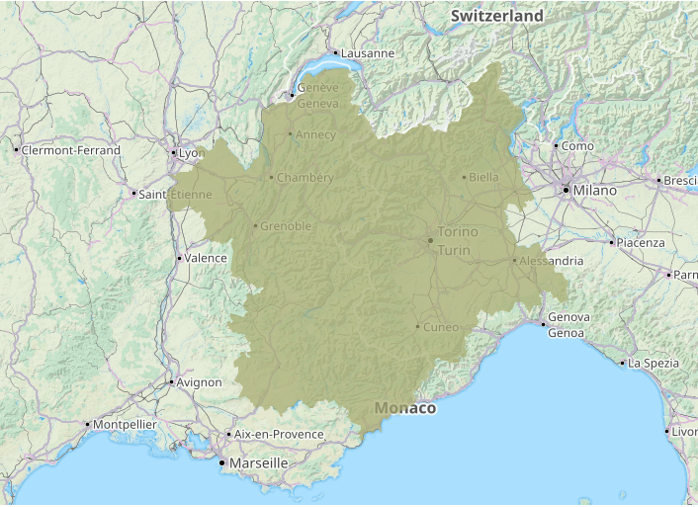
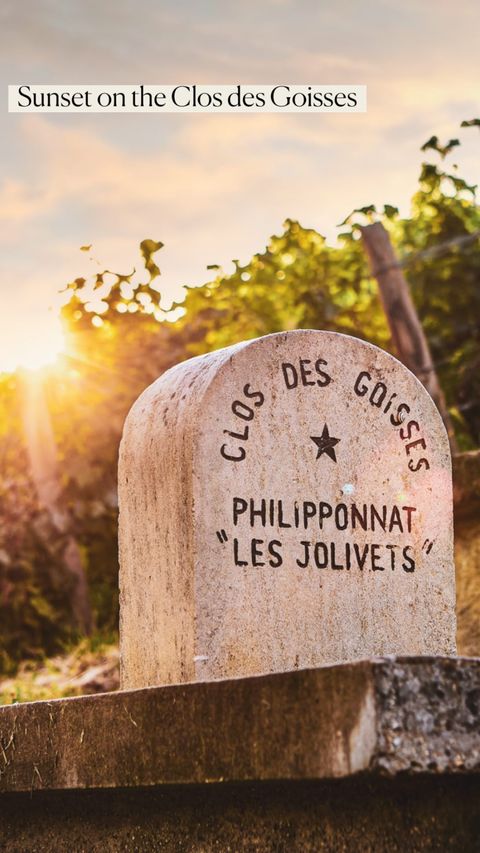
Inderdaad, het ontwikkelde, ik schreef, een en ander vanuit een voortdurende, voortgaande research. Na zoeken in het wilde weg algemeen, navraag bij het Comité (iv) Champagne, een aanvullend zelfzoeken met Google Satellite én Street View zowel rond de officiële als in het algemeen, kwam ik tot de Lijst Van (uiteindelijk) 84. De en passant gevonden kaarten leidden tot enige aanvulling. Toen kwam ik Weinlagen.de tegen en tsja dan ben ik niet meer te houden qua sys-te-matisch alle streken én plaatsjes af! Hoewel, ... in onderstaande tabel heb ik maar niet meer voor ieder stuks de Street View erop losgelaten of onderstaand ingevuld. Terwijl ik er vanuit ga dat dit alles nog aanvulling kan krijgen ... Les Clos Inconnus zijn uiteraard zichzelf.
De gangen kwamen al zeer onregelmatig door, en met andere tafels die uitliepen en/of (weer) bijtrokken, tot zeer ver inhalen zelfs, tot gang 6 van de 7 tachtig (schrijve: 80) minuten op zich liet wachten, ondanks diverse malen navraag. Waarna het nauwelijks-opgewarmde pompoen met koude polenta bleek te zijn; "dat hoort zo" ammehoela. Nee, het niet-koude nagerecht erna hebben we niet gehaald; we zijn opgestaan en weggegaan. Die zien ons nooit meer, zeker omdat de bediening ook Zwak was (gangen aan verkeerde tafeltjes serveren want die waren al twee gangen verder), etc. En balsimaco-saus dus, 'et al.'...
Huh, da's écht voor de Insiders..? Inmiddels wel toegestaan als aanplant, maar nog zo'n drie tot tien jaar onderweg voor er de eerste re-de-lijke wijnen van kunnen worden gemaakt en dan is het nog maar afwachten. Je weet het niet van tevoren hè, met zo'n non-Vinifera druivensoort..! En dan had je Floreal, Artaban en Vidoc nog niet gezien. Die mogen (in de toekomst) ook... En dan is het Comité Champagne ook nog bezig met kruisingen van de Top 3, Arbane, Meslier, en Gouais. #feest
En dan komt hierna een nóg spectaculairdere outsider: Chardonnay rose Rs, minder dan een <em>kwart</em> voetbalveldje aanplant...
Mineraliteit verdient een aparte behandeling; vanuit het idee van 'huh er zit echt geen mineraal/steen in je wijn en lik jij aan stenen-dan'-versus-'toch proef ik die sensatie en Ja' tot en met de abstracte benadering van een kennelijke associatie van een gewaarwording als hier, tot een synthese op de as 'bodem-microbiologie'-in-combinatie-met-'feitelijke chemie'. Want, jawel, fenylmethaanthiol zorgt voor vuursteen / aangestoken lucifer, in combinatie met benzaldehyde (uit 'hout') en waterstofdisulfide (uit reductie; en beide uit bepaalde gisten!) leidend tot Vuursteen-herkenning, versterkt bij anorganische ammonia bijvoorbeeld. Vuursteen is geen 'mineraliteit' maar daar wel belangrijk onderdeel van. Dus Ja, er zitten wel degelijk chemische stoffen in (niet alle gelukkig) wijn die een sensatie veroorzaken die op mineraliteit lijkt. Zout, uiteraard, ook, (niet meer maar wel) vaker dan we denken! Alles tezamen een uit-ste-ken-de reden om te spreken over herkenning van Mineraliteit in wijn. 0-10 en een penalty tegen voor de geo-logen.
Laherte Petit Meslier in the tasting round
Yes @laherteaurelien makes a monocépage of this one. Great Meslier it is:
The golden colour would suggest something dosée, but look closer and you notice a hue which points to slight bitter influences. And indeed, on the nose we get a whiff of smoke, certainly straight after the pour; quite an opportunity to use the word ‘empyreumatic’... Did I mention Meslier already? One to one it is. But nothing referring to your cooking qualities; it’s more like a distant secondhand puff of Belinda – I’d not suggest you buy that for comparison; trust me as smoker it’s trash but as Meslier aroma it’s excellent full stop. Crispy dry cigar smoke fits better.
Certainly, since this all is followed up, much more persistently, with quite some mature lemon and a whole slew of herbs and spices notes. It smells like a merry-go-round of eucalyptus, dill, thyme, spearmint, soft mint, basil, anison, verveine... wormwood even; those that know génépi, find it here, too.
The first sip jumps in with a most delicate mousse, a sensible but not too fatty mouthfeel, nicely balanced with lemon dominant in combo, and ginger/pineapple/mirabelle and dry lemon rind flipping back and forth. In the remarkably long finish, the rind does a gentle cleanse.
But I couldn’t find any cardamom that some mention, nor cocoa or coffee. All in all, in cocktail terms it would fit in the range of the French 75 and a Fleurette.
I’ve tried a little bite of camembert, but you shouldn’t. The bitter of the wine is lost but notches up in the cheese, which tastes odd. The fit with lightly aged Comté or same-Gouda is perfect, however. Sushi should work, too, if with a suitably subtle pinch of wasabi, no more – harsh coriander, algae, chervil, wasabi as such weren’t in the nose.
In summary: All of you should have a taste of this one, or one couldn’t be trusted on champagne connoisseurship.
[Degorge 12-2021, hence the progressed maturity]
Links:
https://maverisk.nl/de-forgotten-four/ for Petit Meslier
https://maverisk.nl/champ-sigaar/ on the cigar smoke angle
https://maverisk.nl/geneprima-spul-hoor/ on génépi
https://maverisk.nl/mirabelle-wil-iedereen-welle/ on mirabelle
@champagnepascalmazet make quite an interesting range of wines, fully certified bio since 1980. We tasted the Cuvée Originel bottling of 2014, for its 35% Pinot Blanc of course; interested to learn how such a Forgotten Four lead, with the three Usual Suspects trailing, would work out.
‘Splendidly’ is the answer.
The gold is striking, the nose is suitably complex. One gets mint, cucumber, cornichon tartness (I mean, the true kind of https://www.kesbeke.nl/) and some olive.
On the palate, it switches to agrumes-allsorts. Yuzu, lightly pre-ripened apricot (yes there’s acidity in there), sparkling grape (ah.) and a hint of almond already. This slowly develops into lemon-grapefruit on the one hand, and yellow curry / pineapple on the other, with a tangerine almost orange'y element integrating both sides. I’d say, there’s a marbling of mirabelle (in Dutch: https://maverisk.nl/mirabelle-wil-iedereen-welle/) running through it as well.
‘But’ overall it certainly is far from flubby (the 3g dosage having turned into the above, no sirup) or acidic. The quality of it all, and the light oak touch, twist all the richness back towards the freshness of citrus zest. And did I mention the mousse is still there, slowly releasing?
Towards the lingering finish, this all persists in a extremely well-balanced acidity and a hint of minerality and sophisticated bitterness.
Am I happy to have another one of these standing ready
Marie Courtin Présence
I bought the @ch_mariecourtin for the 1/3 Pinot Blanc (of course: https://tinyurl.com/ForgotFour !). High expectations, exceeded.
First off, the yellow-golden almost amber colour would promise some sweet almost creamy elements. But with a delightfully tingle from a fresh mousse, and a light bitter-tartness in the nose, the picture turns around completely. There’s Mirabelle ..! [As per: https://tinyurl.com/Mirabellepg]
The palate is perfect; not too much mousse so the real ‘wine’ taste is clear, and the Mirabelle keeps on coming. The mouth feel overall is well-balanced, and includes a soft minty/dill side with the lemon (plus some bittersweet orange even), moving into the grapefruit area and then the mirabelle’s back again. The very long finish has the mint/dill combo again, and an inkling of sugar. But with zero dosage, that’ll be the Chard and almost certainly the Pinot Blanc waving goodbye. Throughout, there’s a slight undertow of pickled cornichon (Amsterdam style; what else?)
All in all, it’s a wonderful demo of what Pinot Blanc can bring; lifting the Chard from its average whilst pulling itself up into high performance. Merging the best of both into Something Else of a great wine. This being a zero dosage, zero sulphur added, zero intervention wine, it also proves that ‘natural’ wines need not be f(l)unky. But on the contrary, one would hardly be able to tell.
The Présence is course material in so many ways. Am I happy? Well, not with six other dwarfs but yes, very much so.
The @champagne_gruet Cuvée Arbane …
𝘚𝘰𝘮𝘦𝘵𝘩𝘪𝘯𝘨 𝘌𝘭𝘴𝘦 entirely!
100% Arbane yes. Which brings a freshness too long lost. Reminds me of the bone dry styles of yesteryear, in a good, rather great way. Chalky without dust, minerality without flint. A wonderful conversation starter, on the good things of life.
With a fresh and quite light, lemon-white colour through which a very fine and persistent mousse promises delight. Then, on the nose, one gets a first whiff of floral notes; jasmine, elderberry, rose – followed by zingy but ripe lemon. When allowed to mellow in the glass (or a day in the bottle), the lemon slowly brings along some grapefruit, pineapple and (dry white) melon. All within measure, refined, nowhere too in-your-face’y.
The mouthfeel is brilliant with the mousse playing its role to keep the very well balanced aspects all quite light. The dosage is hardly noticeable – from the taste of it, one would estimate 2g. max, and notes of soft white peach, light albedo, with a very long finish on the thyme/mint/dill spectrum with the albedo bitters lingering on.
Would work miraculously with e.g., flounder with serious sauce and herbs, swordfish with almond crusting, maybe tuna or mackerel, or white meat.
Saw a score somewhere of 91/100, but that's too low.
Buxeuil doesn’t have any Arbane of its own (in production), but with this Gruet wine, it has a flagship.
Arbane being at only 0,018% (yes, percent) of Champagne’s acreage, this cuvée highlights the 'need' (want!) for quite an extension of that.
Tasting the Pinot Blanc champagne of Gruet of Buxeuil (@champagne_gruet). That’s right, a pure-bred PB champagne. (Be sure to pick the right one, at https://www.champagne-gruet.com/)
And it is a treat, indeed.
In the glass, we have a very fine mousse, well-integrated - it continues very, very long and doesn’t just give a one-off foam layer – through a pale gold, slightly varietal-typical PB wine.
On the nose, the typical character come through immediately, including a slightly fluffy air of white flowers around light tangerine / (white) peach / mirabelle, and a core of lime – keeping nicely short of being bitter.
The mouthfeel is light, but not fleeting. One gets beautiful straight near-ripe lemon, a waft of mint with white blossom, and some white pepper towards the back. Add to that lemon white skin with edges of red grapefruit.
Mind you; I had kept some for a second tasting, and four days (suitably cool storage) after opening, all this was still as fresh. No ‘dosage plays up after too much air’ or so; great.
A top recommendation, this one. If only to keep the Forgotten Four Cépages alive, as they deserve, but also for sheer tasting pleasure. Or ‘the trick one’ at a tasting experiment. Or for an apéritif or with whitish seafood (if not to lime’y or salty).
The Réminiscence 100% pinot blanc brut nature by @champagneericlegrand via @jeromeschampagne. Supposedly off 65+yr old vines, but one would be hard-pressed to tell that by the wine. What delicious freshness!
For a start: What would one expect from a pure PB champagne? Subtlety indeed.
It starts with a new capsule (for me, to further fill my https://www.deknudtframes.fr/en/catalog/product/s65sz2-/frame-in-black-for-champagne-caps which only applies to *different* capsules I tasted *at home*) – under a muselet to duly impress. After a good whiff, one can immediately pick up the something-different of this one. The first 80% is most clearly artichoke with some mint; not very strange since we just made such a dip for (neutral) crackers five minutes before.
After which, with careful nosing/tasting, we get a white-floral element with traces of almonds and yes even a hint of vanilla and the slightest of dried yellow fruit. This continues in the long developing taste, clearly adding ‘a point’+ ripe lemon (citron), with the etheric element slowly (very slowly) fizzling out. Can I say ‘retronasally’ there? As it tactilely *feels* that way for sure. Add some vanilla points in the long after.
All in all, a thing to be savoured. And, let’s promote these ‘forgotten four’ champagnes! Away with the factory work! (One suspects the 24x range by some famous grand marque points in the right away direction, too, qua hyper-mass production orientation.) The more sure we have of being able to choose to never have to taste a same champagne ever again in one’s lifetime. *If* one would want to – wines like the Réminiscence make one still would want to return often. Extend the plantation!
Another round for Gruet of Buxeuil (@champagne_gruet) – The Cuvée des 3 Blancs (as here)
With its matte gold, almost amber appearance and very fine mousse (hardly foamy but lingering in the mouth for a long, long time), we'd expect the Pinot Blanc to dominate over the Arbane and even Chard. It does. A little. But, as assemblages go, only a little; I'd rather say one can identify the PB by its gently soft but full agrumes/mirabelle character but there's a lot of exquisite light flowers – hawthorn – and herb'iness – in the sage, rosemary corner – already in the aromas. Would that be the continuum of the Arbane and Chard?
If one would want to take it analytically.
Savouring, one would enjoy the all-round calm structure, with a medium to full mouthfeel (nothing sticky). And just the image (?) of a surprisingly light white wine with lots of mature grapefruit, lemon and a slice of lime. From which the little bitter note lingers on in the back, most pleasantly refreshing, nothing astringent or harsh. Overall, certainly not chalky bone dry but a hint of mango.
Would I pair this all with food ..? That would be a. hard; a very careful cheese selection might do, b. interesting, to see where the flavours go (see below), c. not necessary, it's a wonderful treat on its own.
This, in a series of Forgotten Four tastings, as per this 'research'.
And the (aubépine and) mirabelle note, Gruet themselves also list. Nice, yet another example of that great aroma.
Plus, one of course has e.g., this and this book, or quite a few others, already..?
Of boek. Hoewel er een beperkt aantal boeken is dat ik hoog heb, zit er niet een[1] bij die nou net op het onderdeel dat mij respectievelijk interesseert, het α tot en met ω heeft. Waar-om en waardoor ik juist de verdere research wil/ 'moet' doen...
[1] Nou ja, deze komt in de buurt...
Jazeker! Zoveel is zeker: Voor bijvoorbeeld de Fransen is dat een volstrekt normale karakterisering. Het gaat dus niet om NaCl uit een Jozo-vaatje... Eerder "off-vuursteen"; denk ook aan de regio van hints in de verte bij wit-peperigheid en magnesium in de buurt. Niet vreemd, als oesters zeer rijk zijn aan zink (sic), ijzer, calcium (dûh) en selenium. Sommigen in NL zeggen dan dat je geen 'zout' of zelfs maar 'zilt' mag zeggen. 1. Van wie niet ..!? 2. Waarom niet ..!? 3. Dat is toch voor zéér velen de beste karakterisering – niemand beweert dus dat er keukenzout in uw wijn zit en iedereen weten dat de karakterisering losstaat van enige bewering van objectieve chemische samenstelling anders zouden we wijnaroma's héél anders beschrijven!
Of zelfs Philpatrick het moet niet gekker worden ... Dus denk niet dat de spellcheck op hol sloeg.
De Cuvée Métisse, noirs et blancs oftewel 80% PN en, jawel, 20% Pinot Blanc, wederom een assemblage met een van de Forgotten Four. Brut nature dat houdt het puur, klaargemaakt bij de BV Val du Clos dan nemen we ook een verre hint daarvan mee. Van Champagne Olivier Horiot, MeB juli 2020, dégorge 16 jan 2023, grotendeels oogst 2019 plus nog een scheut uit de Réserve Perpétuelle die op eik wordt gehouden – ja ik kwam 'm in een coin oublié tegen maar prijs me gelukkig. Quelle belle ouvrage! Als u denkt: Da's een nogal technisch verhaal – dan is dat juist maar het proeven is gewoon een onbekommerd plezier. Het begint uiteraard met de sprankelende licht-amber kleur en een neus met het lichte bittertje, denk aan het dille-thijm spectrum, van de Blanc. Terwijl dan de eerste smaak van de Noir komt. Hoewel licht door de jaren, en dat pufje bitter komt er snel weer bij. Rijpe-appelzuur, heel lang gematigd door-coastend verdund citroensap met in de verte mango en met witte zest erboven zwevend. Maar wel in complete balans, niet vlak of zo maar juist met transparante diepte. Toen ik er een hapje net-nog-niet-compleet-rijpe ananas(kern) bij nam, was dat een moeiteloze, zowat volledige overlap. Later komt er een onderstroom(pje) van iets dat neigt naar kruiden door de mond. En nog steeds met zeer fijne bulles, by the way; verfrissend zonder prikje. In termen van verwachte aroma's zou ik eerder tussen Chard en Meunier op pad gaan van jong naar iets voorbij het midden, en zeker niet te ver naar de rijpe complexe PN-hoek zakken. Al met al een 'opulente' wijn die verrassend jong van geest is (gebleven). De PN is meer steun dan leider in het geheel; prima! En de PB viert z'n vrijheid om te shinen; uitstekende reclame!
5 Sens: De Oogst-2017, MiB 24 juli 2018, Dégorge 12 mei 2023 ja zo exact, met nul dosage voor slechts 1320 fles plus 90 magnums. Van 5 verschillende terroirs, oude stokken van 5 verschillende cépages – PN, Chard en Meuier, en dus ook Arbane en Pinot Blanc; langzaam vergist en opvoeding sur lies. Dat geeft volgens de makers de vijf (jawel) elementen Water, Aarde, Luchten Vuur – en l'Esprit! Wederom een assemblage dus van Olivier Horiot (op @horiotolivier) met Forgotten Four, klaargemaakt bij de BV Val du Clos dan nemen we ook een verre hint daarvan mee. Zo, dan heeft u de data gehad. In termen van aroma's als op de vaste plaat gaat het alle kanten heen, waarbij we ook (laten we zeggen 'traditionele') Chard- en PN-aroma's tegenkomen. Maar niet te uitdrukkelijk. Om het op een rijtje te zetten: De kleur is vol maar licht goud; De mousse is heerlijk, (nog) ruimschoots aanwezig maar zeer fijn; In de neus krijgen we eerst rozenblaadjes en een tikkie mango, maar zo nu en dan ook een zweem ziltigheid ..? Een ander zou het ook witte-peperigheid kunnen noemen. Sommigen vinden dat Arbane meidoorn en anjer geeft; nou ja dat kan ik begrijpen maar pikte ik niet op. Noch wat appel en kweepeer, dat gewicht trof ik minder: Het volle mondgevoel zit stevig in de citrus-hoek. Denk aan lauwwarme, (over)rijpe citroen met een beetje suikerrijpe peer en (geblancheerde) ananas, op het mirabelle af maar wel met een los zwevend zuurtje dat eronderdoorlangs komt zweven, inclusief een puntje venkel/dille. Ik denk dat hier vooral de wat rijpere Pinot Blanc om de hoek komt kijken. Maar al met al wordt het nergens te zwaar; de wijn blijft gewoon helemaal in balans; De citroen is de core der (talrijke) caudalies; zelfbewust maar niet zwaar. Nou ja, als eindconclusie; deze zit op het niveau van een lichte montbazillac of sauternes met mousse..! Werkelijk heerlijk. Voor zover er wat bij moet worden gehapt, zou ik zeggen: Niet te licht, niet te dicht op de sla/Brillat-Savarin-hoek, of te kale zilte oesters. Eerder oesters met enige bewerking, zou ik zeggen. Als per deze – en een geel- of roodschimmelkaasje kan ook nog prima. (vandaar; lichte sauternes ...) – oh en een salade met cajunkip kan ook ...

Étoiles du Nord, voor uw betere wijnen...
Al is het alleen maar door Il Respiro del Vino te kunnen lezen; geen vertaling tot nu toe dan maar zwoegen.
Le Chardonnay rose est une mutation du Chardonnay blanc que l’on trouve historiquement à l'état de ceps isolés dans les vignobles champenois et bourguignons. La mutation porte principalement sur la couleur de la baie qui est d’un rose foncé à maturité. Cette différence a abouti à la proposition d’individualiser le Chardonnay rose comme une variété distincte de sa forme blanche et de l’inscrire en tant que telle au Catalogue français.
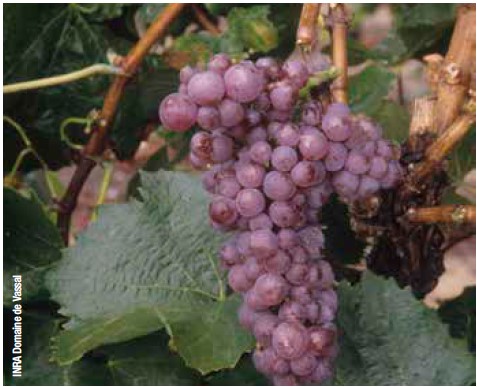
L’origine de ce cépage est difficile à dater. Néanmoins, il existe quelques repères comme la date de son introduction dans la collection de Vassal-Montpellier en 1950 ; deux accessions (ou "introduction" est un clone non agréé conservé dans une collection) de Chardonnay rose y ont été plantées cette année-là. La première, issue de l'ancienne collection dite "de Ravaz" de l'Ecole de Montpellier (donc la date réelle est antérieure à 1950), provenait initialement de la Côte d'Or. La deuxième provenait de la "collection Couvreur Pernin", à Rilly-la-Montagne dans la Marne.
Depuis peu, le Domaine de Vassal-Montpellier possède également deux accessions assainies issues du clone de Rilly-la-Montagne. Récemment de nouvelles accessions de Chardonnay rose ont été recensées dans le vignoble champenois, preuve d’un intérêt croissant pour ce cépage ancien. Cependant, la disparition progressive des veilles vignes ainsi que la pression croissante des viroses, faisaient craindre la perte de diversité génétique au sein de ce cépage et l’abandon de sa culture.